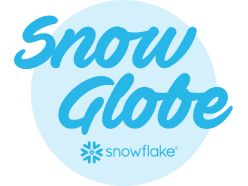Flexible
Spending Accounts
Want more money in your pocket each month? Consider an FSA.
Flexible Spending Accounts (FSAs) allow you to set aside pre-tax dollars from your paycheck to pay for eligible out-of-pocket healthcare or daycare expenses. Our FSAs are administered through Navia Benefit Solutions.
(Company code: SNF)
What’s an FSA?
A Flexible Spending Account (FSA) is a tax-advantaged spending account where you can set aside money for:
- Qualified medical, dental and vision expenses (Healthcare FSA, Limited Healthcare FSA)
- Qualified child care or other dependent care expenses (Dependent care FSA)
How much money can I contribute?
You can contribute up to the IRS annual maximum to your FSAs.
In 2024, the limits are:
- Healthcare/Limited Healthcare FSA: $3,200
- Dependent Care FSA: $5,000
These limits are set by the IRS and are subject to change.
Healthcare FSA
Healthcare FSAs are similar to a Health Savings Account , but you can be enrolled in any medical plan to participate. You set aside money from your paycheck (pre-tax) to save for out-of-pocket healthcare expenses. During annual enrollment, you’ll estimate your healthcare expenses for the upcoming plan year. Your annual contribution will be divided evenly across your pay periods, but you’ll have access to the full yearly contribution right away.
Limited Healthcare FSA
The Limited Healthcare FSA works just like a Healthcare FSA, but is limited to dental and vision expenses. You may also use this account for medical expenses after you have satisfied the annual deductible. This type of FSA is ideal for people enrolled in a Health Savings Account with their High Deductible Health Plan.
- The Limited Purpose (LP) FSA is offered to Snowflake employees enrolled in the CIGNA High Deductible Health Plan (HDHP) with a Health Savings Account.
- The Limited Purpose (LP) FSA works just like the General Purpose Healthcare FSA, but is limited to dental and vision expenses.
- You may also use this account for medical expenses after you have satisfied the annual deductible.
- To prove that the deductible has been met, plan participants will want to provide Navia with a CIGNA statement, such as an Explanation of Benefits (EOB), reflecting that they have met their deductible, and the date the deductible was met.
- Once that is established, Navia can review those post-deductible submissions as long as the service was not covered by insurance.
Dependent Care FSA
Also known as a “Day Care FSA” this type of FSA lets you set aside pre-tax money from your paycheck to save for future dependent care expenses, like day care for your children or care of adult dependents you cover.
FAQs
How do I use the money?
When you enroll in a Healthcare FSA, you will receive an FSA debit card in the mail from Navia, which you can use to pay for eligible expenses.
If you are not able to use your debit card for your healthcare expense, you can also submit reimbursement forms on Navia’s website, or via email or fax.
If you enroll in the Dependent Care FSA, you can only submit claims – there is no debit card. Claims can be submitted by mail, fax, email or online.
What happens to the money I don’t use?
If you don’t spend all of the money in your Healthcare FSA by the end of the given plan year, up to $640 of unused funds will automatically roll over into your account the following year. Anything more than that will not be rolled over, and will be subject to the “use it or lose it” rule.
If you do not spend all of the money in your Dependent Daycare FSA by the end of the given plan year, all remaining funds will be forfeited as they are also subject to the “use it or lose it” rule.


